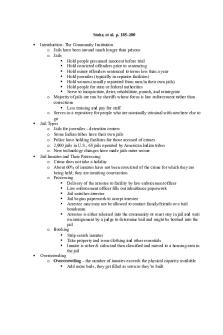Week 3 notes for ACC1007 PDF

| Title | Week 3 notes for ACC1007 |
|---|---|
| Course | Financial Information for Decision Making |
| Institution | Swinburne Online |
| Pages | 1 |
| File Size | 49.8 KB |
| File Type | |
| Total Downloads | 2 |
| Total Views | 130 |
Summary
notes for this week of lectures and workshops...
Description
Week 3: Balance Sheet
The Balance Sheet is a financial statement that details the entity’s assets, liabilities and equity as at a particular point in time — the end of the reporting period. More specifically, the balance sheet summarises at a point in time: •Assets - what the entity owns (or controls) as at a particular date •Liabilities - the external claims on the entity’s assets (what is owed) •Equity - the internal claim on the entity’s assets (what the owner is entitled to). Note that this is also referred to as “owner’s equity”
The balance sheet must always balance. Total Assets ($87,770) will always equal Total Liabilities ($51,400) plus Total Equity ($36,370).
The distinction between current assets and non-current assets is based on the timing of the future economic benefits. If the economic benefits of the asset are expected to be realised within the next reporting period (generally assumed to be 12 months), then the asset is categorised as current. •Inventory is a current asset, as the economic benefits attached to this asset is likely to be realised within the next 12 months (the stock is likely to be sold and converted to cash in that period) •Property is a non-current asset as the economic benefits attached to this asset will be realised over a period longer than 12 months (there will be benefits for the business from owning property for more than 12 months)
Similarly, the distinction between current liabilities and non-current liabilities is based on the timing of the expected future sacrifices. If the outflow of resources attached to the liability are expected to be realised within the next reporting period (assumed to be 12 months), then liability is categorised as current....
Similar Free PDFs

Week 3 notes for ACC1007
- 1 Pages

Notes for Week 3 Tutorial
- 6 Pages

Week 3 - Discussion for Week 3
- 2 Pages

Week 3 notes for NPF 188
- 2 Pages

Week 3 - Lecture notes week 3
- 11 Pages

Week 3 - Lecture notes 3
- 1 Pages

Tutorial week 3 Notes
- 3 Pages

Lecture Notes - Week 3
- 4 Pages

Week 3 Notes
- 9 Pages

Week 3 - Lecture notes 3
- 13 Pages

Week 3 Notes
- 6 Pages

Week 3 Course Notes
- 12 Pages

Seminar notes - week 3
- 14 Pages

PSQF Week 2 Notes 2, Week 3
- 13 Pages

week 3 notes lc pdf
- 3 Pages
Popular Institutions
- Tinajero National High School - Annex
- Politeknik Caltex Riau
- Yokohama City University
- SGT University
- University of Al-Qadisiyah
- Divine Word College of Vigan
- Techniek College Rotterdam
- Universidade de Santiago
- Universiti Teknologi MARA Cawangan Johor Kampus Pasir Gudang
- Poltekkes Kemenkes Yogyakarta
- Baguio City National High School
- Colegio san marcos
- preparatoria uno
- Centro de Bachillerato Tecnológico Industrial y de Servicios No. 107
- Dalian Maritime University
- Quang Trung Secondary School
- Colegio Tecnológico en Informática
- Corporación Regional de Educación Superior
- Grupo CEDVA
- Dar Al Uloom University
- Centro de Estudios Preuniversitarios de la Universidad Nacional de Ingeniería
- 上智大学
- Aakash International School, Nuna Majara
- San Felipe Neri Catholic School
- Kang Chiao International School - New Taipei City
- Misamis Occidental National High School
- Institución Educativa Escuela Normal Juan Ladrilleros
- Kolehiyo ng Pantukan
- Batanes State College
- Instituto Continental
- Sekolah Menengah Kejuruan Kesehatan Kaltara (Tarakan)
- Colegio de La Inmaculada Concepcion - Cebu
